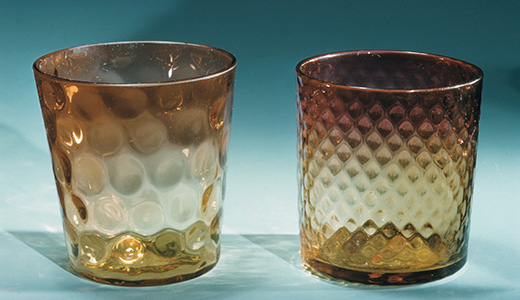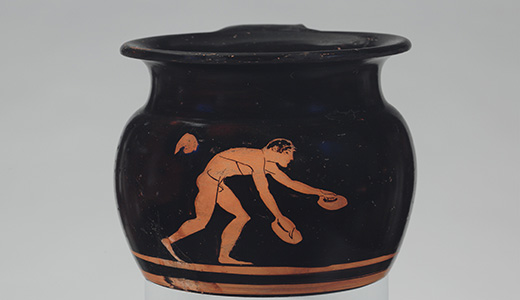 2018
2018
Whiskey tumbler, c. 1883. The Metropolitan Museum of Art, Gift of Mrs. Emily Winthrop Miles, 1946.
A doping scandal has already plagued the 2018 Winter Olympics in Pyeongchang, even though the first event has yet to begin. Twenty-eight Russian athletes, previously banned from competing in international sports because of steroid abuse, have been cleared to participate in the Games. The ruling is controversial, with clean athletes and coaches appealing the decision. During the 2014 Winter Olympics in Sochi, Russian scientists gave top athletes a steroid cocktail dissolved in alcohol (Chivas whiskey for men; Martini vermouth for women) because alcohol helped increase absorption and prevented detection of the drugs. Russians won more medals than any other country during those Games, and the entire Russian national team was banned from sports after the cheating was revealed.
The New York Times elaborates on the intricate system and cover-up:
Evidence and investigative panels have shown Russia meticulously planned a doping program to ensure a good performance at the Sochi Winter Games in 2014.
A three-drug cocktail of banned substances was mixed with liquor and provided to dozens of Russian athletes. Then, during the Games, members of the intelligence service replaced urine samples tainted by drugs with clean urine, breaking into supposedly tamper-proof bottles that clearly were not. At night, they passed bottles through a hole in the wall.
Beyond Sochi, the World Anti-Doping Agency has said that for years Russian officials orchestrated a doping program that involved 1,000 athletes in 30 sports.
 c.
530
c.
530
Terra-cotta mug, c. 460 BC. The Metropolitan Museum of Art, Rogers Fund, 1941.
Lacking performance-enhancing drugs, ancient Olympians turned to sorcery to gain an unfair competitive advantage. Athletes visited professional scribes to commission curse tablets, which needed to be buried within the sports arena to benefit from the utmost magical efficiency. The idea was to cast a spell that would bind the competition, literally preventing them from having the strength to move. The hexes frequently included friendly instructions to the gods invoked to carry out the spell—for instance, look for the chariot team wearing red, third from the left out the gate. Some of the spells were written with the words swirling around the tablet or with the names backward, adding a symbolic layer of mystical disorientation for the competition. Hundreds of curse tablets have been excavated in Greece, Italy, Syria, Egypt, and Jordan and are sometimes found with man-shaped dolls or horses (in the case of charioteers) with their limbs bound with twine. This curse tablet was uncovered in Apamea, a Greek city in Syria in the late fifth century. The Persian general Chosroes supported the “Green” chariot team and had this spell created against Roman emperor Justinian’s favorite “Blue” team:
Most holy Lord Charakteres, tie up, bind the feet, the hands, the sinews, the eyes, the knees, the courage, the leaps, the whip, the victory and the crowning of Porphuras and Hapsicrates, who are in the middle left, as well as his codrivers of the Blue colors in the stable of Eugenius. From this very hour, from today, may they not eat or drink or sleep; instead, from the starting gates, may they see daimones of those who have died prematurely, spirits of those who have died violently, and the fire of Hephaestus. In the hippodrome at the moment when they are about to compete may they not squeeze over, may they not collide, may they not extend, may they not force us out, may they not overtake, may they not break off in a new direction for the entire day when they are about to race. May they be broken, may they be dragged on the ground, may they be destroyed by Topos and by Zablas. Now, now, quickly, quickly!